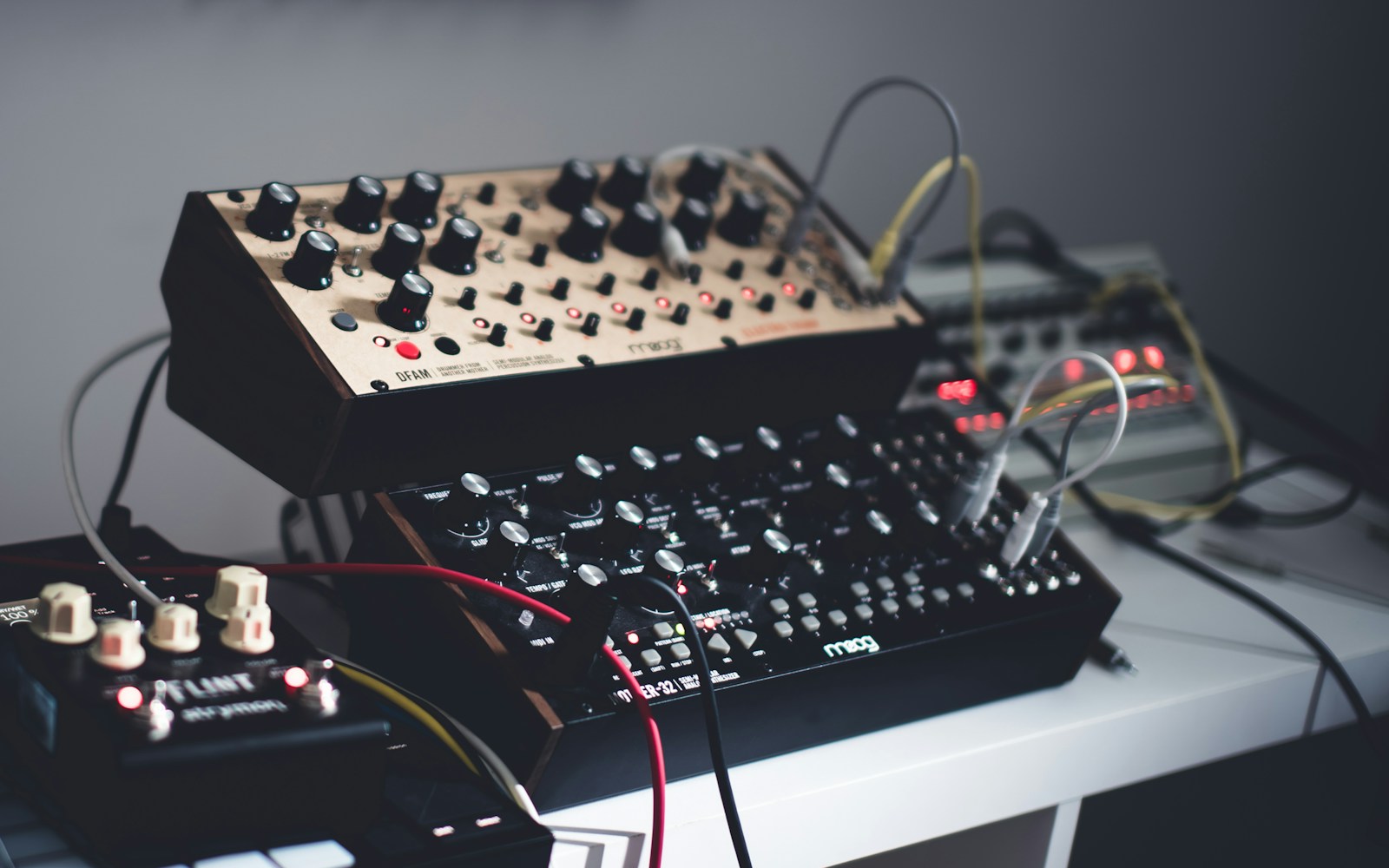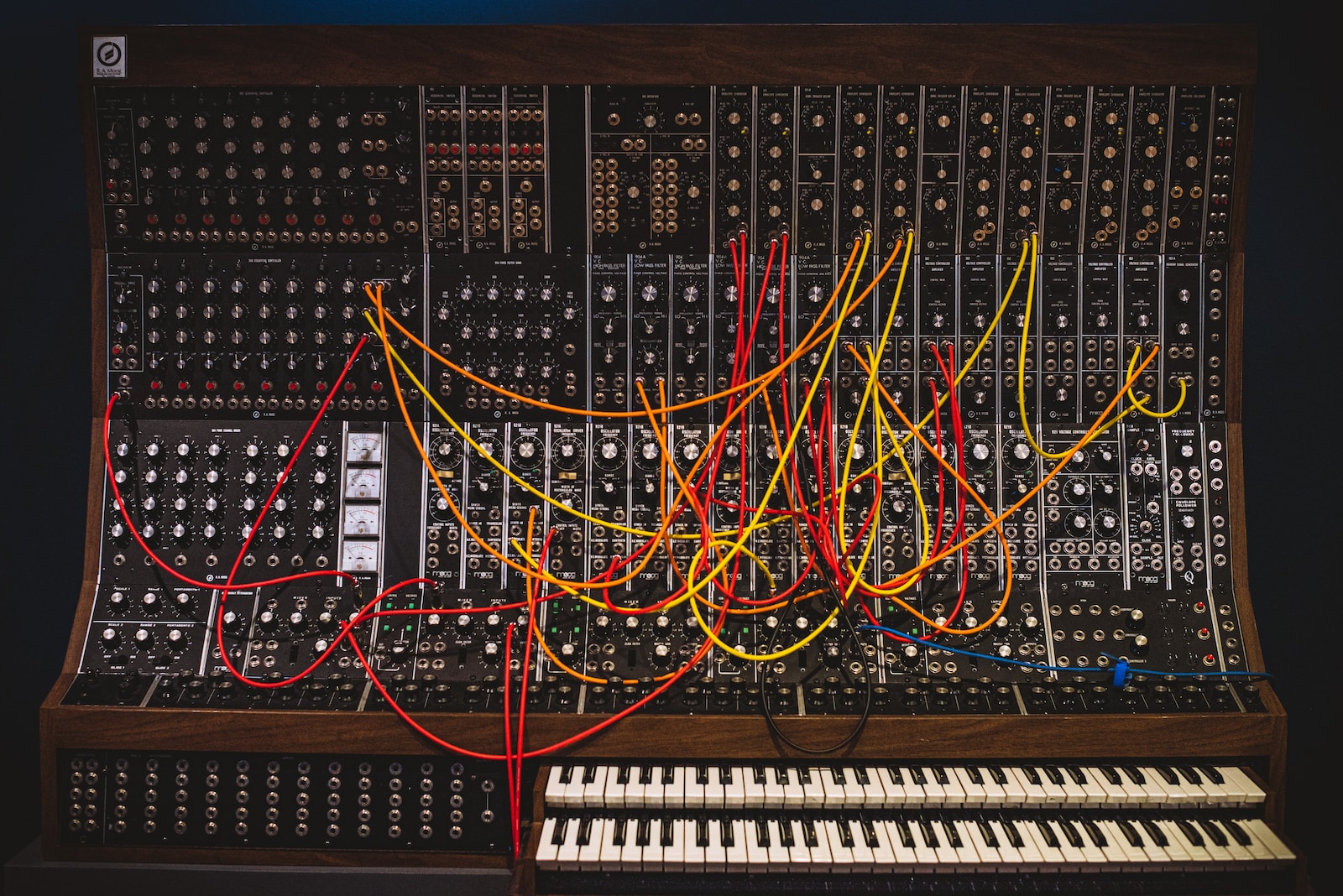
A synthesizer is an electronic instrument that generates and manipulates sound. It consists of various components that work together to produce a wide range of sounds. Here are the main components of a synthesizer:
1. Sound source:
This is where the sound originates from. There are two main types of sound sources:
- Audio sample: Audio samples are digital recordings of real-world sounds or synthetic sounds that are loaded into a synthesizer. When an audio sample is used as the sound source, the synthesizer plays back the recorded waveform to generate the sound. The main advantage of using audio samples as a sound source is that they allow for a wide variety of sounds to be used as the starting point for a sound. This makes it easy to create realistic instrument sounds, vocal samples, or other unique sound textures. However, one of the main drawbacks of using audio samples as a sound source is that they can be limited in terms of pitch and tone control. Audio samples are recorded at specific pitches and tonalities, which means that they can be difficult to transpose or manipulate without compromising the sound quality.
- Oscillator: An oscillator generates an electronic waveform that forms the basis of a sound. There are several types of waveforms, including sine, square, sawtooth, and triangle waves. The oscillator’s frequency determines the pitch of the sound, and it can be adjusted using a keyboard, MIDI controller, or other control devices.
- The main advantage of using oscillators as a sound source is that they offer a high degree of control over the sound generation process. Synthesists can create and manipulate waveforms to produce a wide range of sounds, from classic analog synth tones to modern digital textures. However, one of the main drawbacks of using oscillators as a sound source is that they can be limited in terms of realism. Because they are synthetic, they may not be able to accurately replicate the nuances and subtleties of natural sounds or other instruments.

2. Effects:
Effects are processing tools that modify and shape the sound. There are several types of effects, including:
- Filters: Filters remove or emphasize specific frequency ranges of a sound, allowing the synthesist to sculpt the tone and timbre of the sound. The most common types of filters used in synthesizers are low-pass, high-pass, band-pass, and notch filters.The main advantage of using filters as an effect is that they can create subtle or drastic changes to the sound. For example, a low-pass filter can be used to remove high frequencies from a sound, resulting in a warm and mellow tone. A high-pass filter, on the other hand, can be used to remove low frequencies, resulting in a bright and airy tone.Filters can be used to shape the sound in a musical way, and they are often used to create dynamic changes in a sound over time. For example, a synthesist might use an envelope to automate the filter cutoff frequency, creating a sweeping effect that evolves over time.
- Distortions: Distortion is an effect that adds harmonics and overtones to a sound, resulting in a more aggressive and gritty tone. Distortion can be achieved in various ways, such as using a dedicated distortion unit, overdriving a signal, or digitally processing a sound.The main advantage of using distortion as an effect is that it can add intensity and character to a sound. For example, a distorted guitar tone can sound more aggressive and powerful than a clean tone. Distortion can also be used to create new sounds that are not achievable with traditional instruments.However, one of the main drawbacks of using distortion is that it can be less musical than filters. Too much distortion can result in a harsh and unpleasant sound that may not be suitable for all musical genres.

3. Modulation control:
Modulation control allows you to move and animate the sound over time. There are two main types of modulation control:
- LFO (Low-Frequency Oscillator): LFOs are a type of oscillator that generate waveforms at frequencies below the audible range (typically between 0.1 Hz and 20 Hz). LFOs are used to modulate various parameters of a sound, such as the filter cutoff frequency, the amplitude, or the pitch. The main advantage of using an LFO as a modulator is that it creates rhythmic and cyclic changes to a sound. For example, an LFO can be used to create a vibrato effect on a synth lead, or to create a tremolo effect on a pad. LFOs can be used to create complex and evolving textures in a sound. They can also be synced to the tempo of a song, making it easy to create rhythmic variations that fit with the music.
- Envelope: An envelope is a set of parameters that control how a sound evolves over time. It has four main stages: Attack, Decay, Sustain, and Release (ADSR). The envelope can be used to shape the volume, filter cutoff, and other parameters of a sound.The main advantage of using an envelope as a modulator is that it creates dynamic and expressive changes to a sound. For example, an envelope can be used to create a percussive attack on a sound, or to create a long, sustained pad.Envelopes can be used to create nuanced changes in a sound that follow the natural behavior of traditional instruments. They can also be used to automate the filter cutoff frequency or other parameters, creating complex and evolving textures.
In conclusion, a synthesizer is a complex instrument that consists of various components that work together to produce and manipulate sound. A solid understanding of the various components of a synthesizer and their functions can help the musician, producer, or sound designer to quickly achieve the desired sound. It can also lead to a deeper understanding of how different synthesis methods work, which can help the user to create unique and original sounds.










































































































